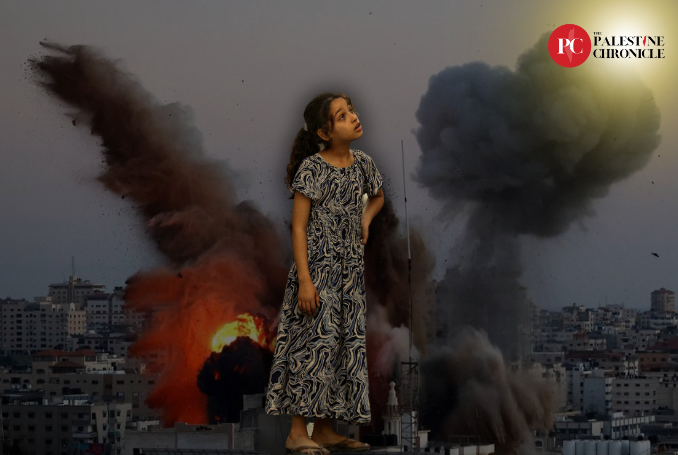
By Flora Nicoletta – Gaza
The Gaza Strip has only one beach, but it is long approximately 45 km, from north to south. Golden sand, cafeterias, restaurants, palm shelters, and a summer without end. It is the local riviera, not directly under palm trees, but directly under occupation by remote-control.
The Gazans love to go to the beach to eat well, to discuss politics, to dream. On the night, on the horizon, the fishing boats, one close to the other, are lined and lighted to attract their catch. The view is magic: a necklace of light balls puts on the sea.
However, it doesn’t happen every night. The fishers may be shot at by the Israeli navy or sometimes are forbidden to sail. Moreover, their water space is continuously reduced to the point that today they can only move in a place large like a lake.
In Gaza, the sky is on the reverse. Not all the lights we see on the sky of Gaza are stars. Many are satellites and, some, spy satellites. They always are above our heads. The real stars of Gaza are not in the sky, they are shinning on the ground. Among them are poets, musicians, artists, violin players, actors, a few orchestras, some chorals, many dabka groups – the traditional dance, jar-makers, writers, playwrights, film-makers, sculptors, singers of romances and nationalistic songs, young and less young painters, photographers…
Composing the living mosaic are also thinkers, designers, a new generation of wonderful architects, intellectuals, university professors of political science, historians, experts in astronomy, agronomy, agriculture, international law, telecommunications and many many more.
It is interesting to sit and to listen to their stories. There is also a man who has built a few years ago a house in rosy stones and created a garden, both coming directly from a tale book, in Nassera St, in Al-Rimal, in Gaza City. And a man who during the summer 2008 opened the first ever archeology Museum in Palestine, built with recycled materials, in Al-Sudaniyeh, north of the Beach RC.
In the popular quarters, as well as in the elegant districts, the chickens in sell stay in the street till the fatal moment before their execution. They are all white, thin, ugly, without all their feathers and over-packed in 2 or 3-storey cages. My old friend Abu Issa uses to tell me: "All of us are like these chickens. The occupiers open the cage, catch us and cut our necks, according to their mood…"
On the other hand, all the trees planted in Gaza in the streets are protected by a metal net. It is an old habit. But sometimes the trees have become big and the nets – such as rusty barrels – have not been removed.
When we have a look around us in Gaza, we see that everything is caged: the chickens, the trees, exotic and local animals in three or four zoos and the humans. The Gazans call the 365 km2 of their cage Guantanamo II and Abu Ghreib.
My neighbor, after Ramadan, has built a semi-open rudimental cage in a corner of his garden for his cock. The cock was tall, robust, arrogant, very white, with an impressive red crown. It crowed rarely. After the 1967 occupation, the new rulers sent to Gaza chickens and birds from Israeli nurseries. So, this specie is called Israeli cock. But now the cock of my neighbor looks very miserable with one of its legs attached to the cage. It doesn’t move, loses its feathers and doesn’t crow anymore.
In Palestine Street, in a lovely gift boutique opened a few months ago, a large collection of key-rings is visible from the window. Almost all of them represent the map of Palestine carved on metal, on wood, embroidered. The map of Palestine is neither Gaza and Jericho first, nor the West Bank and the Gaza Strip with Jerusalem as capital. It represents the entire historic Palestine, from north to south, from Ras Al-Naqura to Um Rashrash (Eilat).
Such maps of Palestine are present everywhere in Gaza, in big and small sizes, on every material imaginable. It is the past, it could be the future… Came here Pharaoh, Samson, Napoleon nearly escaped an ambush in Khan Younis, kings and emperors, conquerors and invaders. and all sorts of rulers and barbarians. They came and they left and the people always remain – as say the Gazans.
For the time being, the Gaza beach is full of small shells and the small shells of the Gaza beach are the tears of the sea… and the tears of the Palestinian people…
– Flora Nicoletta is a French independent journalist who lives in Gaza. She is currently working onher fourth book on the Palestinian question. She contributed this article to PalestineChronicle.com.





